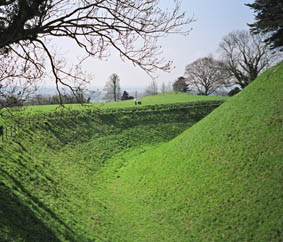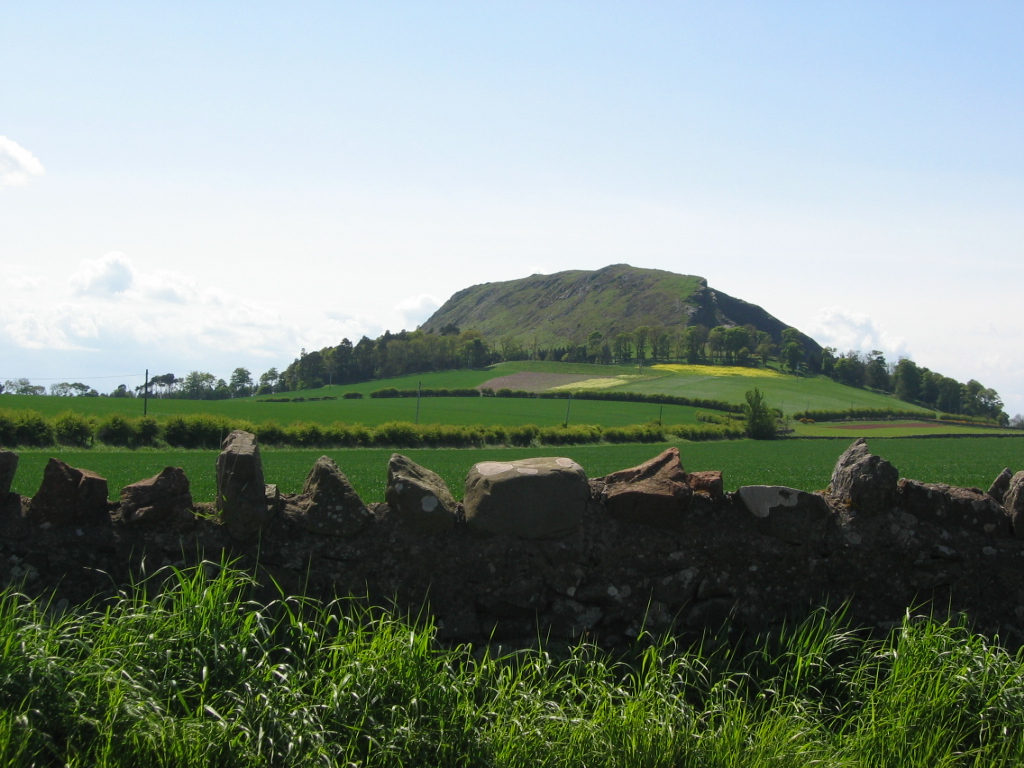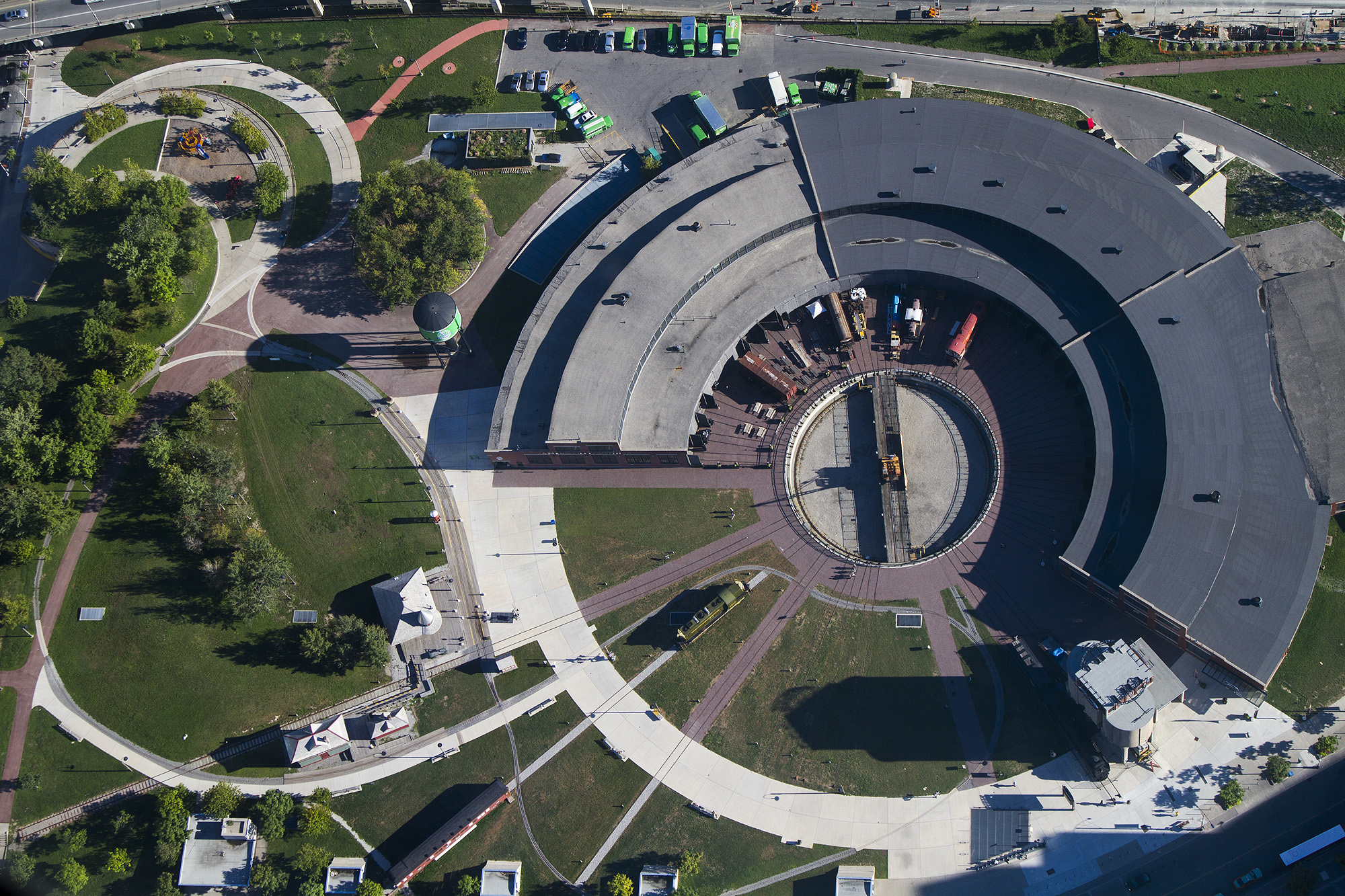|
Chesters Hill Fort
Chesters Hill Fort is an Iron Age hill fort in East Lothian, Scotland. It lies south of Drem, east of Ballencrieff Castle Ballencrieff Castle, also known as Ballencrieff House, is a large tower house at Ballencrieff, East Lothian, Scotland. It is located three miles north west of Haddington, and one mile south of Aberlady. History The castle was built in 1507 whe ..., north of Haddington, and west of Athelstaneford. The name "Chesters" comes from Latin ''castra'', a fortified place. This fortified village with its system of ramparts and ditches around a settlement of about twenty roundhouses is in the care of Historic Environment Scotland, who describe it as "one of the best-preserved examples in Scotland of an Iron age fort". The hillfort was subject to a detailed programme of survey by Rampart Scotland. Photo gallery Image:Chesters Hill Fort East Lothian.jpg Image:Historic Scotland plaque Chesters.jpg Image:Chesters gate.jpg Image:Chesters 1.jpg Image:Che ... [...More Info...] [...Related Items...] OR: [Wikipedia] [Google] [Baidu] |
Iron Age
The Iron Age is the final epoch of the three-age division of the prehistory and protohistory of humanity. It was preceded by the Stone Age (Paleolithic, Mesolithic, Neolithic) and the Bronze Age (Chalcolithic). The concept has been mostly applied to Iron Age Europe and the Ancient Near East, but also, by analogy, to other parts of the Old World. The duration of the Iron Age varies depending on the region under consideration. It is defined by archaeological convention. The "Iron Age" begins locally when the production of iron or steel has advanced to the point where iron tools and weapons replace their bronze equivalents in common use. In the Ancient Near East, this transition took place in the wake of the Bronze Age collapse, in the 12th century BC. The technology soon spread throughout the Mediterranean Basin region and to South Asia (Iron Age in India) between the 12th and 11th century BC. Its further spread to Central Asia, Eastern Europe, and Central Europe is somewhat dela ... [...More Info...] [...Related Items...] OR: [Wikipedia] [Google] [Baidu] |
Ditch (fortification)
In military engineering, a ditch is an obstacle designed to slow down or break up an attacking force, while a trench is intended to provide cover to the defenders. In military fortifications the side of a ditch farthest from the enemy and closest to the next line of defence is known as the scarp while the side of a ditch closest to the enemy is known as the counterscarp. Uses In early fortifications, ditches were often used in combination with ramparts to slow down the enemy whilst defensive fire could be brought to bear from the relative protection afforded by the rampart and possibly the palisade. In medieval fortification, a ditch was often constructed in front of a defensive wall to hinder mining and escalade activities from an attacker. When filled with water, such a defensive ditch is called a moat. However, moats may also be dry. Later star forts designed by military engineers like Vauban, comprised elaborate networks of ditches and parapets, carefully calculated ... [...More Info...] [...Related Items...] OR: [Wikipedia] [Google] [Baidu] |
Former Populated Places In Scotland
A former is an object, such as a template, gauge or cutting die, which is used to form something such as a boat's hull. Typically, a former gives shape to a structure that may have complex curvature. A former may become an integral part of the finished structure, as in an aircraft fuselage, or it may be removable, being using in the construction process and then discarded or re-used. Aircraft formers Formers are used in the construction of aircraft fuselage, of which a typical fuselage has a series from the nose to the empennage, typically perpendicular to the longitudinal axis of the aircraft. The primary purpose of formers is to establish the shape of the fuselage and reduce the column length of stringers to prevent instability. Formers are typically attached to longerons, which support the skin of the aircraft. The "former-and-longeron" technique (also called stations and stringers) was adopted from boat construction, and was typical of light aircraft built until the ad ... [...More Info...] [...Related Items...] OR: [Wikipedia] [Google] [Baidu] |
Hill Forts In Scotland
Hillforts in Scotland are earthworks, sometimes with wooden or stone enclosures, built on higher ground, which usually include a significant settlement, built within the modern boundaries of Scotland. They were first studied in the eighteenth century and the first serious field research was undertaken in the nineteenth century. In the twentieth century there were large numbers of archaeological investigations of specific sites, with an emphasis on establishing a chronology of the forts. Forts have been classified by type and their military and ritual functions have been debated. They were introduced into Scotland during the Bronze Age from around 1000 BCE. The largest group are from the Iron Age, with over 1,000 hillforts, mostly below the Clyde-Forth line, most of which were abandoned during the period of Roman occupation of Britain. There are also large numbers of vitrified forts, which have been subjected to fire, many of which may date to this period and are found across Scot ... [...More Info...] [...Related Items...] OR: [Wikipedia] [Google] [Baidu] |
History Of East Lothian
History (derived ) is the systematic study and the documentation of the human activity. The time period of event before the invention of writing systems is considered prehistory. "History" is an umbrella term comprising past events as well as the memory, discovery, collection, organization, presentation, and interpretation of these events. Historians seek knowledge of the past using historical sources such as written documents, oral accounts, art and material artifacts, and ecological markers. History is not complete and still has debatable mysteries. History is also an academic discipline which uses narrative to describe, examine, question, and analyze past events, and investigate their patterns of cause and effect. Historians often debate which narrative best explains an event, as well as the significance of different causes and effects. Historians also debate the nature of history as an end in itself, as well as its usefulness to give perspective on the problems o ... [...More Info...] [...Related Items...] OR: [Wikipedia] [Google] [Baidu] |
List Of Places In East Lothian
''Map of places in East Lothian compiled from this list'' The List of places in East Lothian is a list for any town, village, hamlet, castle, golf course, historic house, hill fort, lighthouse, nature reserve, reservoir, river, and other place of interest in the East Lothian council area of Scotland. Prestongrange Industrial Heritage Museum A *Aberlady, Aberlady Bay *Archerfield Estate and Links *Athelstaneford *Auldhame & Scoughall B * Ballencrieff, Ballencrieff Castle *Bankton House * Bara *Barnes Castle * Barns Ness, Barns Ness Lighthouse *Bass Rock *Battle of Carberry Hill * Belhaven, Belhaven Brewery, Belhaven Sands *Biel, Biel House, Biel Water, *Bilsdean * Birns Water * Birsley Brae * Black Castle * Blackcastle Hill *Blindwells *Bolton, Bolton Parish Church *Broxburn *Broxmouth *Brunton Theatre * Burns' Mother's Well C *Canty Bay * Carberry, Carberry Tower * Castleton *Chesters Hill Fort *Cockenzie, Cockenzie ... [...More Info...] [...Related Items...] OR: [Wikipedia] [Google] [Baidu] |
List Of Hill Forts In Scotland
This article lists a few selected examples of hill forts in Scotland. The remains of at least 1,695 hillforts have been counted throughout the country as a whole, most predominantly on the Scottish mainland, and also including on some of the Scottish islands. One of the highest concentrations of historic hillforts in Europe, according to the Trimontium Trust, is in the Scottish Borders, including particularly in the historic county of Berwickshire. Hill forts in Scotland typically date from the Bronze and Iron Ages, but post-Roman inhabitation of many sites is also important. The remains today typically survive only as earthworks with occasional traces of structural stone in varying quantity. Remains of vitrified forts are also found throughout Scotland. __NOTOC__ Aberdeenshire * Bennachie * Dunnicaer * Dunnideer * Tap o' Noth Angus * The Caterthuns Argyll and Bute * An Caisteal, Coll * Dùn Cholla, Colonsay * Dùn Dubh, Coll * Dùn Eibhinn, Colonsay * Dùn Meadh ... [...More Info...] [...Related Items...] OR: [Wikipedia] [Google] [Baidu] |
Historic Environment Scotland
Historic Environment Scotland (HES) ( gd, Àrainneachd Eachdraidheil Alba) is an executive non-departmental public body responsible for investigating, caring for and promoting Scotland's historic environment. HES was formed in 2015 from the merger of government agency Historic Scotland with the Royal Commission on the Ancient and Historical Monuments of Scotland (RCAHMS). Among other duties, Historic Environment Scotland maintains more than 300 properties of national importance including Edinburgh Castle, Skara Brae and Fort George. History The responsibilities of HES were formerly split between Historic Scotland, a government agency responsible for properties of national importance, and the Royal Commission on the Ancient and Historical Monuments of Scotland (RCAHMS), which collected and managed records about Scotland's historic environment. Under the terms of a Bill of the Scottish Parliament published on 3 March 2014, the pair were dissolved and their functions transferred ... [...More Info...] [...Related Items...] OR: [Wikipedia] [Google] [Baidu] |
Railway Roundhouse
A railway roundhouse is a building with a circular or semicircular shape used by railways for servicing and storing locomotives. Traditionally, though not always the case today, these buildings surrounded or were adjacent to a turntable. Overview Early steam locomotives normally traveled forwards only. Although reverse operations capabilities were soon built into locomotive mechanisms, the controls were normally optimized for forward travel, and the locomotives often could not operate as well in reverse. Some passenger cars, such as observation cars, were also designed as late as the 1960s for operations in a particular direction. Turntables allowed locomotives or other rolling stock to be turned around for the return journey, and roundhouses, designed to radiate around the turntables, were built to service and store these locomotives. Most modern diesel and electric locomotives can run equally well in either direction, and many are push-pull trains with control cabs at ea ... [...More Info...] [...Related Items...] OR: [Wikipedia] [Google] [Baidu] |
Rampart (fortification)
In fortification architecture, a bank or rampart is a length of embankment or wall forming part of the defensive boundary of a castle, hillfort, settlement or other fortified site. It is usually broad-topped and made of excavated earth and/or masonry.Darvill, Timothy (2008). ''Oxford Concise Dictionary of Archaeology'', 2nd ed., Oxford University Press, Oxford and New York, p. 376. . Early fortifications Many types of early fortification, from prehistory through to the Early Middle Ages, employed earth ramparts usually in combination with external ditches to defend the outer perimeter of a fortified site or settlement. Hillforts, ringforts or "raths" and ringworks all made use of ditch and rampart defences, and they are the characteristic feature of circular ramparts. The ramparts could be reinforced and raised in height by the use of palisades. This type of arrangement was a feature of the motte and bailey castle of northern Europe in the early medieval period. Types of ram ... [...More Info...] [...Related Items...] OR: [Wikipedia] [Google] [Baidu] |
Hill Fort
A hillfort is a type of earthwork used as a fortified refuge or defended settlement, located to exploit a rise in elevation for defensive advantage. They are typically European and of the Bronze Age or Iron Age. Some were used in the post-Roman period. The fortification usually follows the contours of a hill and consists of one or more lines of earthworks, with stockades or defensive walls, and external ditches. Hillforts developed in the Late Bronze and Early Iron Age, roughly the start of the first millennium BC, and were used in many Celtic areas of central and western Europe until the Roman conquest. Nomenclature The spellings "hill fort", "hill-fort" and "hillfort" are all used in the archaeological literature. The ''Monument Type Thesaurus'' published by the Forum on Information Standards in Heritage lists ''hillfort'' as the preferred term. They all refer to an elevated site with one or more ramparts made of earth, stone and/or wood, with an external ditch. M ... [...More Info...] [...Related Items...] OR: [Wikipedia] [Google] [Baidu] |
Latin
Latin (, or , ) is a classical language belonging to the Italic branch of the Indo-European languages. Latin was originally a dialect spoken in the lower Tiber area (then known as Latium) around present-day Rome, but through the power of the Roman Republic it became the dominant language in the Italian region and subsequently throughout the Roman Empire. Even after the fall of Western Rome, Latin remained the common language of international communication, science, scholarship and academia in Europe until well into the 18th century, when other regional vernaculars (including its own descendants, the Romance languages) supplanted it in common academic and political usage, and it eventually became a dead language in the modern linguistic definition. Latin is a highly inflected language, with three distinct genders (masculine, feminine, and neuter), six or seven noun cases (nominative, accusative, genitive, dative, ablative, and vocative), five declensions, four verb conjuga ... [...More Info...] [...Related Items...] OR: [Wikipedia] [Google] [Baidu] |




.jpg)




